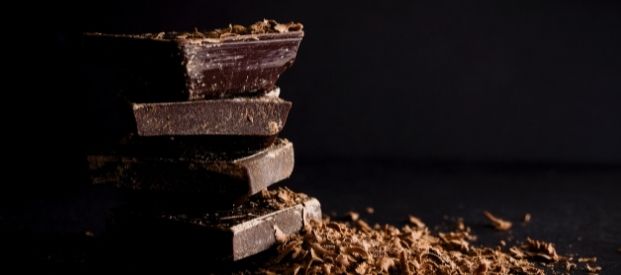World Chocolate Day
 Rich dark truffles, walnut whip, gold-wrapped bunny, creme egg … whichever is your favourite chocolate treat, it’s time to lay in a supply because 7 July is World Chocolate Day.
Rich dark truffles, walnut whip, gold-wrapped bunny, creme egg … whichever is your favourite chocolate treat, it’s time to lay in a supply because 7 July is World Chocolate Day.
Why 7 July? They say it’s because chocolate was first introduced to Europe on 7 July in 1550. We’re not sure of the accuracy of this claim – but does it really matter? We won’t turn down an excuse to eat chocolate!
When did Europe’s love of chocolate begin?
Christopher Columbus first encountered cocoa seeds during his fourth and last voyage to the Americas when, on 15 August 1502, a dugout canoe laden with goods for trade came alongside his ship. Columbus observed that the Mayan crew treated the cocoa beans – which he assumed to be a type of almond – with great care as if they were extremely valuable. Although he brought some of the precious beans back to Spain, he had no idea of their use.
At the time of the invasion of the Aztec empire, Spanish Conquistador Don Hernán Cortés became (probably) the first European to taste the bitter drink made from cocoa beans. In 1528 he brought beans from the Americas to Spain where at first there was little interest in drinking chocolate and it was often used as medicine. Gradually, as people experimented with adding sugar, vanilla or honey to reduce the bitterness, it was transformed into a delicious beverage which became fashionable at the Spanish court. The custom of drinking chocolate slowly spread to other European countries although it was still a luxury only the rich could afford. London’s first chocolate house opened in 1657, serving drinking chocolate flavoured with coffee, wine and pepper.
In 1828, Dutch chemist Coenraad Johannes van Houten found a way to treat cocoa beans with alkaline salts to make a powdered chocolate that was more easily mixed with water. Thanks to his discovery and the invention of the cocoa press, cocoa powder could be produced more easily and mass-production began. Europe was set on the path to making chocolate affordable for everyone.
For much of the 1800s, chocolate was enjoyed as a drink mixed with water or milk. It was not until 1847 that British chocolatiers J. S. Fry & Sons created the first solid chocolate bar, formed from a paste made of sugar, chocolate liquor and cocoa butter. The first chocolate Easter egg emerged from Fry & Sons’ factory in 1873 and three years later, Swiss chocolatier Daniel Peter was the first to add dried milk powder to create milk chocolate.
The origins of chocolate
Chocolate is made from the seeds of the cocoa tree – a small evergreen tree, native to the deep tropical region of the Americas. The Olmec and pre-Olmec people of southern Mexico were probably the first to make a chocolate drink by drying, fermenting, roasting and grinding cocoa beans. At sites dating back to 1900BC, archaeologists have uncovered Olmec pots showing traces of the cocoa chemical theobromine.
The Mayans and Aztecs greatly revered the bean and used it in sacred rituals, believing it had divine properties. For the Aztecs, who lived in the Mexican highlands where the cocoa tree could not survive, chocolate was a luxury made from imported beans. They used the valuable cocoa seeds and beans as currency.
World Chocolate Day
On 7 July, many of us at Rose Calendars will be celebrating World Chocolate Day by indulging in our favourite treats. Whether the date is a random choice or historic fact, we’re not going to quibble.
However, we’d love to know more about the date, so if you can shed light on the suggestion that chocolate first arrived in Europe on 7 July 1550, please do get in touch and satisfy our curiosity.









